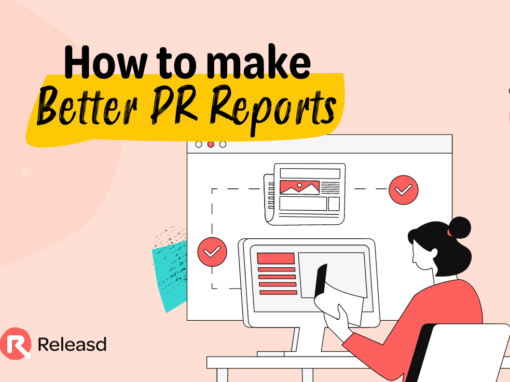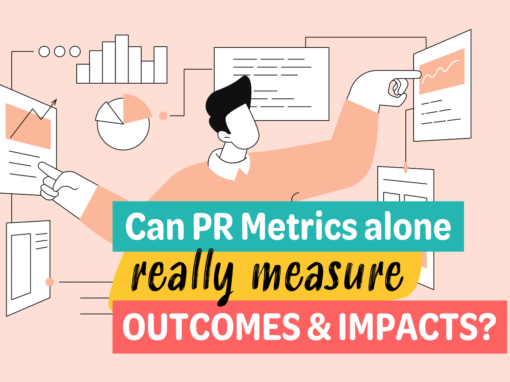PR case studies are essential to showcasing campaign achievements and illustrating exceptional work.
- Struggling to turn client successes into compelling case studies that actually land new deals?
- Tired of case studies that feel like dry, self-promotional brochures which put people to sleep?
- Worried that existing case studies are not showcasing the team’s expertise and unique value proposition in a way that will resonate with potential clients?
These marketing resources help prospective clients understand how PRs establish brand identity and present clients in their best light. When it comes to getting potential clients to sign on the dotted line, a strong PR case study should get them to put pen to paper.
This article offers a roadmap to crafting PR case studies that wow. We’ll cover:
- The secret sauce to crafting narratives that resonate with the target market.
- Transforming data into digestible (and brag-worthy) results.
- Adding a dash of personality to make the case studies stick.
Why Do PR Case Study Examples Matter?
The absence of PR case study examples can create a question mark for prospective clients. Naturally, they want to learn about what PRs have achieved for others. Social proof is perhaps the most powerful tool agencies and freelancers use to get prospective clients over the finish line. Effective PR case study examples can inspire confidence and ultimately, conversions.
Many prospective clients are looking to peers to make purchasing decisions. They seek a sense of assurance from those around them. With access to a range of PR case study examples, individuals or organisations can make informed decisions about moving forward. Ideally, PRs should assemble a full stack of case studies to help move the needle.
There is no shortage of ways for PRs to share case studies in their marketing. Aside from simply having a dedicated case studies page on their websites, PRs can strategically place case studies on landing pages. If prospects are still in the consideration phase of the buyer’s journey, a few solid case studies could help to push them further down the sales funnel.
7 Tricks & Tips for Crafting Public Relations Campaign Case Studies That Stick
Believe it or not, there is actually a magic formula for crafting perfect public relations campaign case studies. While we do not claim to know much about sorcery or wizardry, we’ve learned a few tricks for producing compelling case studies over the years. As a go-to coverage reporting tool, Releasd works directly with PR agencies and in-house teams. Let’s break it down.
Focus on saying something genuinely meaningful
PR case studies should reflect an ability to deliver results. While this might sound obvious, many case studies get caught up in talking about solutions without mentioning the problems. Effective case studies resonate with prospects because the initial problems faced by clients typically align with the problems prospects are currently facing. It’s all about alignment.
When prospects begin to see themselves in each case study subject, this increases the conversation power of the case study as an asset. The case studies should explore how agencies or freelancers took a client from A to B – highlighting the initial problem and the solution. If case studies only focus on B (the solutions), they lose their conversion power.
Experiment with unconventional formats
The best PR case studies swing for the fences and communicate narratives in unconventional ways. Experimenting with different types of media, including interactive graphics and videos, can help to illustrate each client’s journey from the initial problem to the solution. In other words, don’t play it safe. Bring something prospects want to browse through to the table.
Box-standard testimonial soundbites often fail to pack a punch. Sure, sprinkle a few of these throughout each case study – but don’t put them front and centre. Instead, leverage graphics and videos to illustrate each client’s journey. To tell the client’s story, some PRs choose to write their case studies using the client’s voice (in the first person) or simply include a video of the client.
Add context to the case study
To set the scene, an effective case study should answer the following questions:
- Who is the client?
- What does the individual or organisation do?
- Why do they do what they do?
- How long have they been doing this?
- How successful are they at what they do?
- What problem were they trying to solve?
Stay authentic and honest
While case studies should positively reflect on a business, PRs must focus on authenticity by offering an honest account of their own performance. If there were areas for improvement in a campaign, there is nothing wrong with mentioning these. At the same time, PRs can also share metrics that seem unremarkable but help to paint a complete picture of campaign performance.
Include original imagery and graphics
Take some time to play around with the format of case studies. Original images and graphics can help bring each case study to life, especially if these images include real people. People want to see the faces of those who have experienced success working with a PR agency or freelancer. The case studies should offer an insight into exactly who these clients are.
Demonstrate PR impact with tangible benefits
What has the PR agency or freelancer enabled the client to achieve? Demonstrating the impact of a campaign is an important part of communicating value. Prospective clients want to know what is possible and the easiest way to show them is through case studies. If they choose to invest in PR services, they need an understanding of what is realistically achievable.
Celebrate PR success
Many PRs underestimate the potential conversion power of case studies. As a result, they often fail to dedicate enough time to developing these marketing resources. Pushing these resources further and pouring time into crafting them may pay dividends in the long run. To get prospects over the finish line, the perfect case study may be the missing piece of the puzzle.
Closing Thoughts on Developing PR Campaign Case Studies
Developing compelling case studies takes time and effort. Bringing everything together will require input from clients. With this in mind, PRs should make a clear list of materials needed for the creation of the case study. Making the process as seamless as possible will help to prevent back-and-forth communication with clients.
Those using our PR coverage reporting tool can easily pull client data from past reports to create engaging case studies.
Interested in exploring the possibilities of our coverage tool?
Book a 15-minute demo with our team today.



